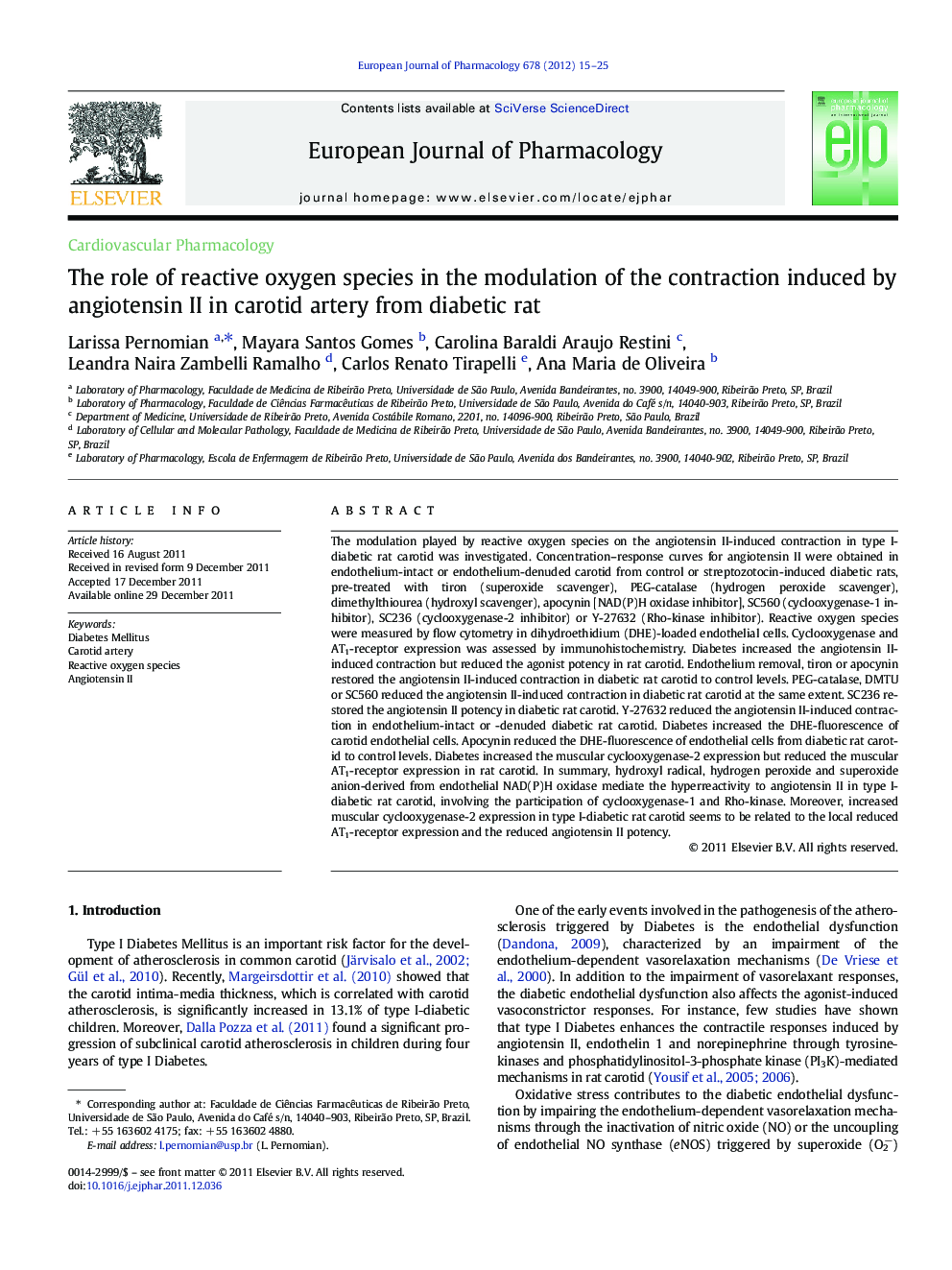| Article ID | Journal | Published Year | Pages | File Type |
|---|---|---|---|---|
| 5829788 | European Journal of Pharmacology | 2012 | 11 Pages |
Abstract
The modulation played by reactive oxygen species on the angiotensin II-induced contraction in type I-diabetic rat carotid was investigated. Concentration-response curves for angiotensin II were obtained in endothelium-intact or endothelium-denuded carotid from control or streptozotocin-induced diabetic rats, pre-treated with tiron (superoxide scavenger), PEG-catalase (hydrogen peroxide scavenger), dimethylthiourea (hydroxyl scavenger), apocynin [NAD(P)H oxidase inhibitor], SC560 (cyclooxygenase-1 inhibitor), SC236 (cyclooxygenase-2 inhibitor) or Y-27632 (Rho-kinase inhibitor). Reactive oxygen species were measured by flow cytometry in dihydroethidium (DHE)-loaded endothelial cells. Cyclooxygenase and AT1-receptor expression was assessed by immunohistochemistry. Diabetes increased the angiotensin II-induced contraction but reduced the agonist potency in rat carotid. Endothelium removal, tiron or apocynin restored the angiotensin II-induced contraction in diabetic rat carotid to control levels. PEG-catalase, DMTU or SC560 reduced the angiotensin II-induced contraction in diabetic rat carotid at the same extent. SC236 restored the angiotensin II potency in diabetic rat carotid. Y-27632 reduced the angiotensin II-induced contraction in endothelium-intact or -denuded diabetic rat carotid. Diabetes increased the DHE-fluorescence of carotid endothelial cells. Apocynin reduced the DHE-fluorescence of endothelial cells from diabetic rat carotid to control levels. Diabetes increased the muscular cyclooxygenase-2 expression but reduced the muscular AT1-receptor expression in rat carotid. In summary, hydroxyl radical, hydrogen peroxide and superoxide anion-derived from endothelial NAD(P)H oxidase mediate the hyperreactivity to angiotensin II in type I-diabetic rat carotid, involving the participation of cyclooxygenase-1 and Rho-kinase. Moreover, increased muscular cyclooxygenase-2 expression in type I-diabetic rat carotid seems to be related to the local reduced AT1-receptor expression and the reduced angiotensin II potency.
Related Topics
Life Sciences
Neuroscience
Cellular and Molecular Neuroscience
Authors
Larissa Pernomian, Mayara Santos Gomes, Carolina Baraldi Araujo Restini, Leandra Naira Zambelli Ramalho, Carlos Renato Tirapelli, Ana Maria de Oliveira,
